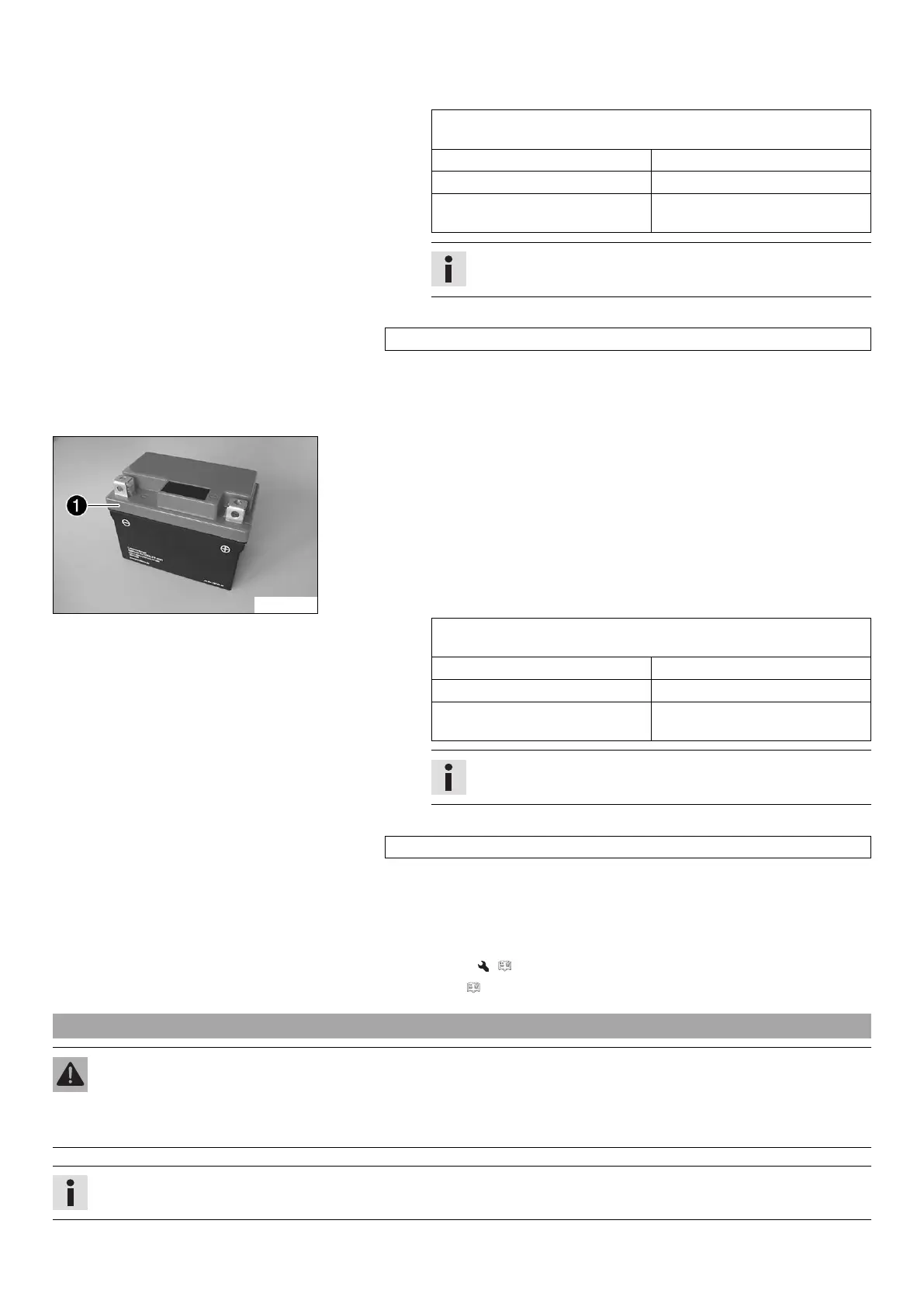14 ELECTRICAL SYSTEM 80
Guideline
The charging current, charging voltage, and charging time must not
be exceeded.
Maximum charging voltage 14.4 V
Maximum charging current 3.0 A
Charge the battery regularly when
the motorcycle is not in use
6 months
Info
Never remove cover
.
– Connect the battery charger to the battery. Switch on the battery charger.
Battery charger (58429074000)
You can also use the battery charger to test the open-circuit voltage and start
potential of the battery, and to test the alternator. With this device, you cannot
overcharge the battery. The charging time may be longer at low temperatures.
– Switch off the battery charger after charging and disconnect from the battery.
S00863-10
(XC‑F US)
– Check the battery voltage.
» Battery voltage: < 9 V
– Do not charge the battery.
– Replace the battery and dispose of the old battery properly.
» If the specifications have been met:
Battery voltage: ≥ 9 V
– Recharge the battery.
Guideline
The charging current, charging voltage, and charging time must not
be exceeded.
Maximum charging voltage 14.4 V
Maximum charging current 3.0 A
Charge the battery regularly when
the motorcycle is not in use
6 months
Info
Never remove cover
.
– Connect the battery charger to the battery. Switch on the battery charger.
Battery charger (58429074000)
You can also use the battery charger to test the open-circuit voltage and start
potential of the battery, and to test the alternator. With this device, you cannot
overcharge the battery. The charging time may be longer at low temperatures.
– Switch off the battery charger after charging and disconnect from the battery.
Finishing work
– Install the battery. ( p. 78)
– Mount the seat. ( p. 50)
14.4 Changing the main fuse
Warning
Fire hazard Incorrect fuses overload the electrical system.
– Only use fuses with the required ampere value.
– Do not bypass or repair fuses.
Info
The main fuse protects all power consumers of the vehicle. It is located in the starter relay housing under the seat.

